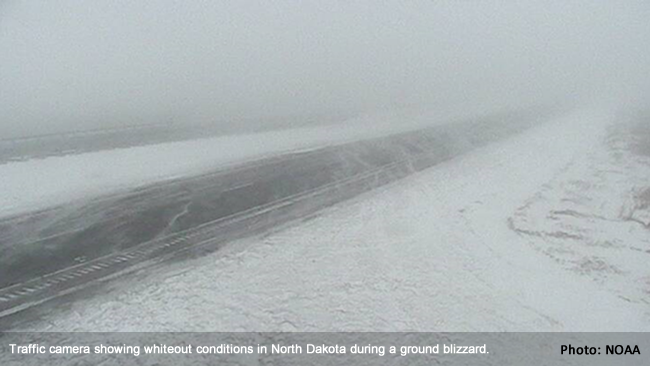
The most well-known blizzards are winter storms that produce several inches occurring with strong winds that cause blowing snow and whiteout conditions, but not all blizzards happen this way. In the Midwest, ground blizzards develop with little or no concurrent (or new) snowfall. One of the most infamous ground blizzards was the Children's Blizzard of 1888, which killed an estimated 235 people in the Great Plains. This ground blizzard was extremely dangerous because it was preceded by unseasonably warm air, which caused people to let their guard down. Many people ventured outside without proper winter clothing, but the relatively warm weather did not last long. Since then, there have been countless other ground blizzards, many of which were deadly.
The typical ground blizzard occurs when an Arctic cold front moves through the region, causing temperatures to drop and winds to increase quite rapidly, often reaching gusts of 50 to 60 mph. If there are several inches of deep fresh snow on the ground, this strong wind will quickly pick up the snow and create whiteout conditions. Another reason these blizzards are dangerous is the cold temperatures that follow behind the Arctic front. Anyone stranded in their vehicle or forced to walk outside is at risk of frostbite or hypothermia.